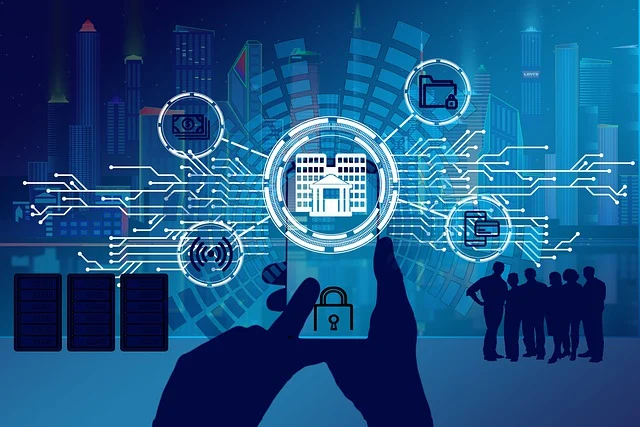E-commerce has been a driving force of change in the retail and business landscape for over two decades. The COVID-19 pandemic accelerated its growth, forcing businesses and consumers to adopt digital shopping at an unprecedented rate. By 2025, e-commerce will continue to evolve, driven by emerging technologies, shifting consumer behaviors, and innovative business models. Here are the key trends shaping the future of e-commerce and the role of AI in 2025.
1. The Rise of AI-Powered Personalization
In 2025, artificial intelligence (AI) will play a central role in delivering highly personalized shopping experiences. AI algorithms will analyze customer data to predict preferences, recommend products, and tailor marketing messages. This level of personalization will enhance customer loyalty and drive higher conversion rates.
Voice commerce, powered by AI-driven voice assistants, will also see significant growth. Customers will use devices like smart speakers to search for products, place orders, and receive recommendations, making the shopping process even more seamless.
2. Augmented Reality (AR) and Virtual Reality (VR)
Augmented reality and virtual reality will redefine how consumers shop online. AR will allow customers to virtually try on clothes, makeup, or accessories, while VR will enable immersive virtual store experiences. These technologies will bridge the gap between physical and online shopping, providing customers with greater confidence in their purchasing decisions.
For example, furniture retailers will let customers visualize how products will look in their homes, and fashion brands will offer virtual fitting rooms, reducing return rates and increasing customer satisfaction.
3. Expansion of Social Commerce
Social media platforms will continue to evolve as powerful e-commerce channels. Features like in-app shopping, live-streamed product demonstrations, and shoppable posts will make it easier for consumers to discover and buy products without leaving their favorite apps. By 2025, platforms like Instagram, TikTok, and Pinterest will become integral to e-commerce strategies.
Additionally, influencer marketing will become more sophisticated, with influencers collaborating with brands to create exclusive product lines and limited-time offers, driving engagement and sales.
4. Sustainable and Ethical Shopping
Consumers are increasingly demanding transparency and sustainability from the brands they support. By 2025, e-commerce companies will prioritize eco-friendly practices, such as using biodegradable packaging, offering carbon-neutral delivery options, and sourcing sustainable materials.
Platforms will also provide detailed information about a product’s supply chain, helping consumers make informed choices. Businesses that align with these values will gain a competitive edge in attracting environmentally conscious shoppers.
5. Growth of Subscription-Based Models
Subscription-based e-commerce will continue to thrive, with more businesses adopting this model to build recurring revenue streams. By 2025, subscription services will expand beyond traditional categories like meal kits and streaming services to include fashion, personal care, and even technology.
AI will further enhance subscription models by analyzing customer preferences and automatically curating personalized products or services, ensuring a high level of customer satisfaction and retention.
6. Hyper-Fast Delivery and Micro-Fulfillment Centers
Consumers’ expectations for fast delivery will reach new heights by 2025. Retailers will invest in hyper-local micro-fulfillment centers to ensure same-day or even one-hour delivery for a wide range of products. Innovations like drone deliveries and autonomous vehicles will also play a significant role in meeting these demands.
Retailers partnering with logistics companies to create seamless last-mile delivery solutions will gain a competitive edge. These advancements will not only enhance customer satisfaction but also reduce delivery costs and environmental impact.
7. The Integration of Cryptocurrency and Digital Wallets
Cryptocurrency and digital wallets will become more mainstream in e-commerce by 2025. Consumers will demand secure, fast, and decentralized payment options, pushing businesses to integrate cryptocurrencies like Bitcoin, Ethereum, and stablecoins as payment methods.
Digital wallets, such as Apple Pay, Google Pay, and region-specific options like Alipay, will dominate checkout processes, offering convenience and enhancing security. This shift will cater to the growing demand for cashless transactions and provide global customers with more flexible payment options.
8. AI-Driven Supply Chain Optimization
Efficient supply chain management will be a cornerstone of successful e-commerce operations in 2025. AI will enable businesses to forecast demand, manage inventory, and optimize shipping routes more effectively. Real-time tracking and predictive analytics will ensure that customers receive their orders on time, even during peak shopping seasons.
Retailers will also use AI to identify and mitigate risks, such as supply chain disruptions, ensuring smooth operations and improved customer satisfaction.
9. The Dominance of Mobile Commerce (M-Commerce)
Mobile commerce will continue its rapid growth, with smartphones becoming the primary device for online shopping. By 2025, businesses will optimize their websites and apps for mobile users, offering faster load times, simplified navigation, and secure payment options.
Progressive Web Apps (PWAs) will gain popularity, providing users with app-like experiences directly through their mobile browsers. Businesses that prioritize mobile-first strategies will capture a larger share of the growing m-commerce market.
10. AI-Powered Customer Service
Customer service will become faster and more efficient with the widespread adoption of AI chatbots and virtual assistants. These tools will handle common queries, process returns, and provide personalized recommendations 24/7, freeing up human agents to focus on complex issues.
By 2025, customer service will integrate with multiple channels, including social media, messaging apps, and voice assistants, ensuring a seamless experience for shoppers wherever they choose to interact.
Conclusion
The future of e-commerce in 2025 is bright, driven by technological advancements and evolving consumer preferences. Businesses that embrace trends like AI-powered personalization, AR/VR integration, social commerce, and sustainability will thrive in the competitive landscape. As e-commerce continues to grow, the line between physical and digital shopping will blur, creating new opportunities and challenges for retailers. Nowadays Amazon and TEMU is a large online shopping platform.
By staying ahead of these trends, businesses can deliver exceptional customer experiences, foster loyalty, and secure long-term success in the ever-changing world of e-commerce.







